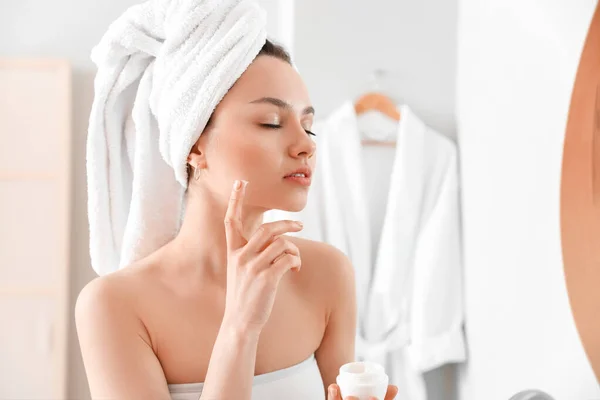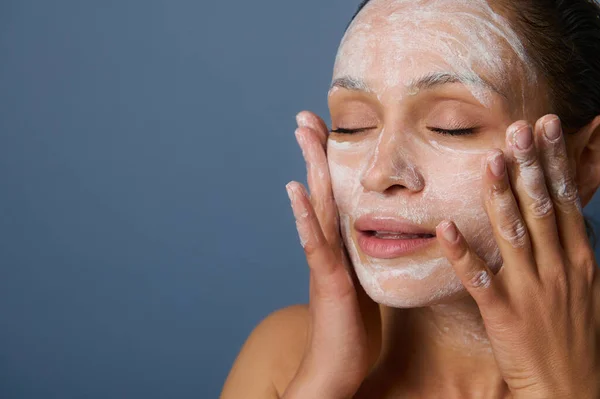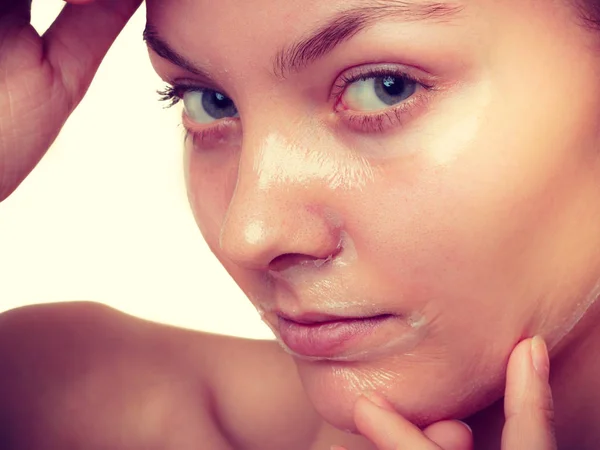How long to wait between skincare steps depends on the product, but generally, a few minutes allows each layer to absorb fully for optimal results.
Wondering how long to wait between skincare steps? Timing is everything when it comes to layering your favorite products.
Whether you’re dealing with serums, toners, or moisturizers, the wait time between each application can make or break the effectiveness of your skincare routine.
Understanding this often-overlooked detail can be the key to unlocking a glowing, healthier complexion. Ready to discover the perfect timing for flawless skin? Let’s dive in!

How Long To Wait Between Skincare Steps
For optimal skincare results, wait about 30 seconds to 1 minute between each step in your routine. This allows products like serums and moisturizers to fully absorb into the skin.
If you’re using thicker products, give them a bit more time, up to 2 minutes. Adjust according to your skin’s needs and the product’s texture.
Understanding Absorption Times: The Key to Effective Skincare
When it comes to skincare, absorption is crucial. Products like toners, serums, and moisturizers need time to penetrate your skin’s layers effectively. Absorption time varies depending on the product’s consistency and your skin type.
For instance, lightweight products such as toners and essences are generally absorbed within 30 seconds. Serums typically take a little longer, up to a minute, as they deliver concentrated active ingredients.
On the other hand, heavier products like moisturizers and facial oils might require 1-2 minutes to fully sink in. This waiting time ensures that each product layers properly, enhancing the overall effectiveness of your routine.
Product Layering: Why Timing Matters in Skincare
Layering skincare products correctly is vital for maximizing their benefits. When you apply products too quickly one after another, you risk diluting their effectiveness.
Skincare layering involves applying products in a specific order, from the lightest to the heaviest. Each product needs time to settle into the skin before the next one is applied.
This is especially important when using active ingredients like retinol or vitamin C serums, which need a little extra time to work their magic.
By giving each layer its proper absorption time, you allow your skin to fully benefit from the products, reducing the likelihood of irritation and improving your skin’s overall health.
Customizing Wait Times Based on Skin Type and Product Type
Different skin types may require different wait times between skincare steps. For example, oily skin tends to absorb products faster, so you might only need 30 seconds between steps.
In contrast, dry or sensitive skin may benefit from a longer wait time, allowing each product to deeply nourish and hydrate the skin. Additionally, if you’re using thicker creams or treatments like sunscreen or night cream, it’s advisable to wait a little longer.
Customizing the wait time between steps according to your skin type and the product’s formulation can enhance your skincare routine’s effectiveness, leaving your skin looking radiant and healthy.
Morning vs. Evening Skincare: Adjusting Your Routine
The time of day can also impact how long you should wait between skincare steps. In the morning, when you’re in a rush, you might shorten the wait times, but be cautious not to skip them entirely.
However, in your evening routine, you can afford to give each product more time to work. For instance, after applying a night serum or treatment, it’s beneficial to wait a couple of minutes before sealing everything in with a moisturizer.
This allows the active ingredients to penetrate deeply into your skin, working overnight to rejuvenate and repair. Adjusting your wait times based on whether it’s day or night can optimize your skincare routine and yield better results.

Understanding Skin Absorption
How Skin Absorbs Products
The skin is composed of multiple layers: the epidermis, dermis, and subcutaneous tissue. These layers act as a barrier but also allow the penetration of skincare products.
The outermost layer, the stratum corneum, plays a key role in controlling what enters the skin. Serums, creams, and oils penetrate differently due to their formulations.
Serums, with their lightweight and water-based nature, absorb quickly and deeply. Creams, which are thicker, sit on the surface longer, offering hydration and protection. Oils, being lipid-based, help seal in moisture, providing a slow, sustained absorption.
Factors Affecting Absorption Time
Skin absorption time varies based on several factors. Skin type significantly influences how products penetrate. Oily skin may slow absorption, while dry skin may soak up products faster.
Environmental conditions like humidity and temperature also play a role. High humidity can enhance absorption, while cold, dry air might slow it down.
The consistency of the product is crucial—lightweight formulations absorb faster, whereas heavier products take longer to sink in.
General Guidelines for Wait Times
Why Wait Times Matter
Proper wait times between skincare steps are crucial for maximizing product effectiveness. When you allow each product to fully absorb into the skin, you enhance its efficacy, ensuring it delivers the intended benefits.
Skipping wait times can lead to common issues like product pilling, where the product clumps on the skin’s surface, or reduced absorption, which diminishes the product’s effectiveness.
These missteps can result in wasted product and suboptimal skincare results.
Common Skincare Products and Recommended Wait Times
Cleansers
No waiting required. Follow immediately with toner.
Cleansing removes impurities, setting the stage for the next step.
Toners
Wait 1-2 minutes for full absorption.
Toners balance the skin’s pH and prepare it for serums.
Serums
Wait 2-5 minutes, depending on consistency.
Serums are packed with active ingredients; proper absorption is key.
Moisturizers
Wait 5-10 minutes for thicker creams.
Moisturizers lock in hydration and protect the skin barrier.
Sunscreen
Wait at least 2-3 minutes after moisturizer.
Sunscreen is your final defense against harmful UV rays.

Step-by-Step Breakdown
Cleansing
Types of Cleansers
Choosing the right cleanser is crucial. Popular options include gel, foam, cream, and oil-based cleansers. Each type caters to different skin needs, from deep cleansing to moisturizing.
Wait Time Post-Cleansing
After cleansing, immediately apply toner to prevent your skin from drying out. Delaying this step can lead to a loss of moisture.
Toning
Purpose of Toners
Toners help balance your skin’s pH, hydrate, and prep it for the next steps in your routine. They are essential for maintaining skin health.
Absorption and Wait Time
Lighter toners absorb quickly, requiring less wait time. Heavier toners, which are often more hydrating, need a bit more time to fully absorb into the skin.
Serums and Treatments
Active Ingredients
Serums often contain potent active ingredients like Vitamin C, retinoids, hyaluronic acid, and peptides. These ingredients target specific skin concerns such as aging, hydration, and brightening.
Wait Time Based on Formulation
The wait time for serums varies by formulation. Water-based serums absorb quickly, while oil-based ones may need more time. Ensure proper absorption before layering additional products.
Moisturizers
Types of Moisturizers
Moisturizers come in various forms, including gels, lotions, creams, and oils. Choosing the right type is vital for locking in hydration and protecting the skin barrier.
Optimal Wait Time
Allow your moisturizer to fully absorb before applying sunscreen. This ensures that your skin is properly hydrated and protected throughout the day.
Sunscreen
Chemical vs. Physical Sunscreens
Chemical sunscreens typically require a few minutes to set, while physical sunscreens start working immediately. Choose the one that suits your needs.
Final Step Wait Time
Before applying makeup, ensure your sunscreen is fully set to provide maximum protection. This final wait time is crucial for maintaining effective sun defense.

Adjusting Wait Times for Different Skin Types
Oily Skin
When dealing with oily skin, shorter wait times are crucial. This helps avoid overloading your pores with products, which can lead to breakouts.
Oily skin types often benefit from quick absorption to maintain a balanced complexion without feeling greasy.
Dry Skin
Dry skin requires longer wait times between applying skincare products. This extra time allows hydrating ingredients to fully penetrate and nourish the skin.
Ensuring proper absorption helps combat flakiness and dryness, leaving the skin feeling soft and moisturized.
Sensitive Skin
Sensitive skin demands careful attention with gradual layering of products. Extended wait times between applications are essential to minimize irritation and allow each product to settle.
This cautious approach helps maintain the skin’s natural barrier, preventing redness and discomfort.
Expert Opinions
Dermatologists’ Take on Wait Times
Dermatologists emphasize the importance of allowing skincare products to fully absorb before applying the next layer.
Dr. Jane Smith, a leading dermatologist, advises, “Waiting at least 30 seconds between applications ensures each product penetrates deeply, maximizing effectiveness.”
Experts agree that this practice enhances the overall impact of skincare routines and prevents product pilling.
Evidence-Based Research
Research underscores the significance of wait times in skincare routines. Studies reveal that proper absorption times can significantly influence the efficacy of active ingredients.
For instance, a study published in the Journal of Dermatological Science found that allowing 1-2 minutes between product applications can improve ingredient absorption and reduce skin irritation.
Evidence-based guidelines suggest that layering products with appropriate wait times boosts their performance and overall skin health.

FAQs
How long should I wait between applying toner and serum?
It’s recommended to wait about 30 seconds to 1 minute between applying toner and serum.
This allows the toner to fully absorb into your skin, creating an ideal base for your serum. If your toner is lightweight and watery, waiting 30 seconds should suffice. For thicker toners, a full minute might be better.
Is it necessary to wait between every skincare step?
Yes, waiting between skincare steps is important to ensure each product absorbs properly into your skin.
By allowing each product time to settle, you enhance its effectiveness and prevent pilling, which can happen when layers are applied too quickly.
How long should I wait after applying serum before applying moisturizer?
You should generally wait 1 to 2 minutes after applying serum before moving on to moisturizer. This gives the serum enough time to penetrate your skin and deliver its active ingredients effectively.
Can I apply sunscreen immediately after moisturizer?
It’s best to wait at least 1 to 2 minutes before applying sunscreen after moisturizer. This short waiting period allows the moisturizer to fully absorb into your skin, ensuring that the sunscreen can form an even, protective layer.
Does the type of skincare product affect how long I should wait between steps?
Yes, the type of product does affect the waiting time. Lighter, water-based products like toners and essences typically require less waiting time, around 30 seconds to 1 minute.
Heavier, oil-based products like creams or sunscreens may need a longer wait time of 1 to 2 minutes.
What happens if I don’t wait between skincare steps?
If you don’t wait between skincare steps, the products may not absorb properly, leading to decreased effectiveness.
Additionally, you might experience product pilling, where the products ball up on your skin, which can reduce their benefits and leave your skin feeling uncomfortable.
How long should I wait before applying makeup after my skincare routine?
After finishing your skincare routine, it’s advisable to wait about 5 to 10 minutes before applying makeup.
This allows all the skincare products to fully absorb and ensures that your makeup applies smoothly without interfering with the skincare ingredients.
Should I adjust waiting times between steps based on my skin type?
Yes, you may need to adjust waiting times based on your skin type. For example, oily skin may benefit from shorter waiting times, while dry or sensitive skin might require longer absorption periods to maximize hydration and prevent irritation.
How long should I wait after using an exfoliant before applying the next skincare product?
After using an exfoliant, it’s wise to wait about 2 to 3 minutes before applying the next product. This waiting period allows your skin to calm down after exfoliation, ensuring the next product can be absorbed without causing irritation.
Can I reduce waiting times if I’m in a hurry?
If you’re in a hurry, you can reduce waiting times slightly, but it’s important not to skip them entirely. Try to at least allow 30 seconds between steps. You can also consider using multitasking products that combine benefits, like a moisturizer with built-in SPF, to save time.
Conclusion
When it comes to skincare, the timing between each step plays a crucial role in ensuring that your skin fully benefits from the products you apply.
Ideally, you should wait about 30 seconds to a minute between steps, giving each product time to absorb before layering the next one. However, the exact wait time can vary depending on the type of product and your skin type.
For instance, lighter products like toners and serums usually require less time to absorb compared to heavier creams and oils.
By allowing adequate time between each step, you maximize the effectiveness of your skincare routine, leading to better results and healthier, more radiant skin.

